St. Jørgen’s cemetery
St. Jørgen’s Hospital had its own cemetery, at least in the 18th and 19th centuries. It was situated at Hospitalsengen, just above the church, on the other side of the street Kong Oscars gate. The cemetery is shown on a map from the 18th century but was probably situated in the same location before that time. Evidence suggests that the hospital had its own cemetery as early as 1567. Absalon Pedersson Beyer, a clergyman at the cathedral, recounts in his diary that he performed a funeral at ‘Spital’s Cemetery’, the hospital’s cemetery.
Hilbrandt Meyer wrote that when St. Jacob’s cemetery was established in 1629, it was situated 300 steps south of the hospital cemetery. This roughly corresponds with the cemetery’s known location from the 18th and 19th centuries. The history of this cemetery may even date back to the hospital’s origins. In any case, it is reasonable to assume that, since its foundation, the hospital’s residents would have been buried on the area of land that the hospital owned.
The cemetery was in use until the late 19th century. Pictures from that time show that the cemetery was surrounded by a wall. There seems to be a period when it was turned into a park with garden paths, and it looks like it was later used to grow crops. The land was sold at the end of the 1890s and parts of the site were developed into the apartment building that is now Kong Oscars gate 60.
We know that more recent residents of St. Jørgen’s Hospital and Årstad parish used separate areas of St. Jacob’s cemetery and probably also Assistentkirkegården cemetery. Church records show that St. Jørgen’s residents were later buried at the large new cemeteries at Møllendal and Solheim. There are also examples of residents, at the request of their families, being buried in the places from where they came.
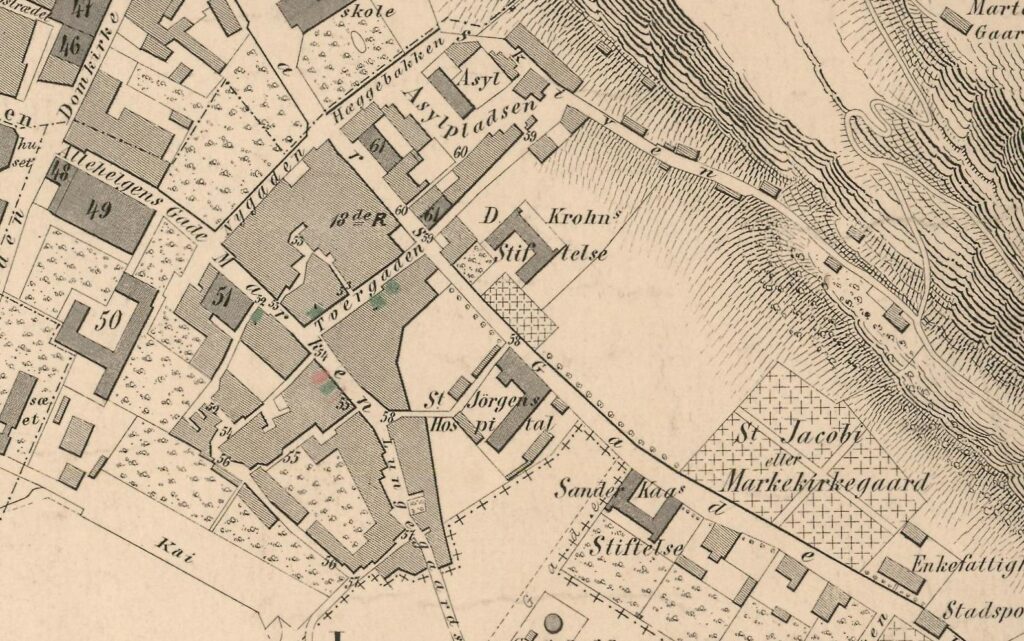
Bergen City Archives.
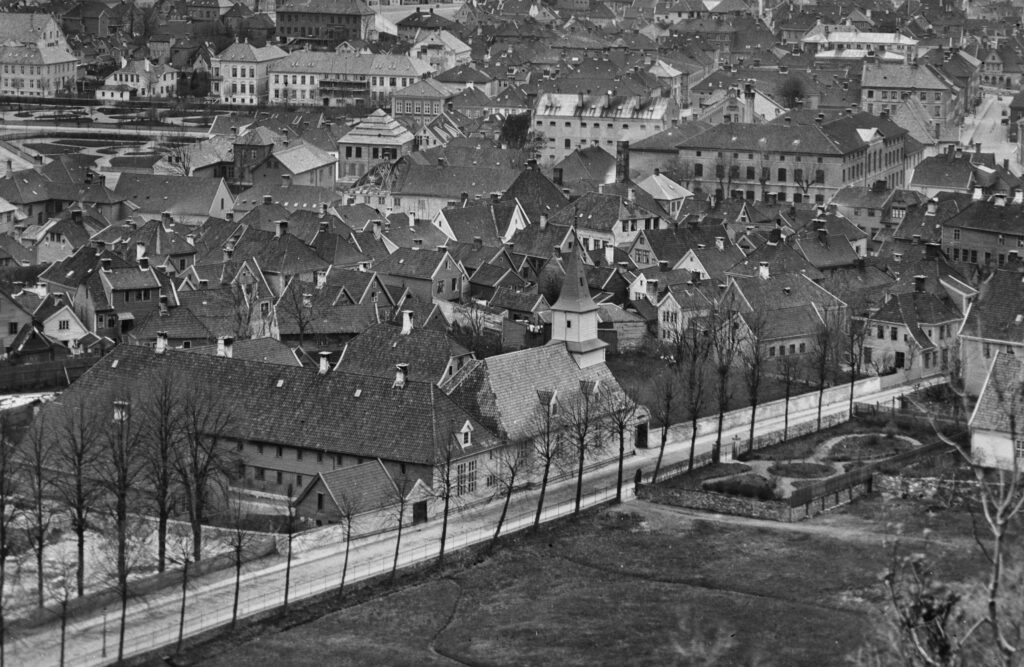
Photo: Knud Knudsen. Detail. The University of Bergen Library.
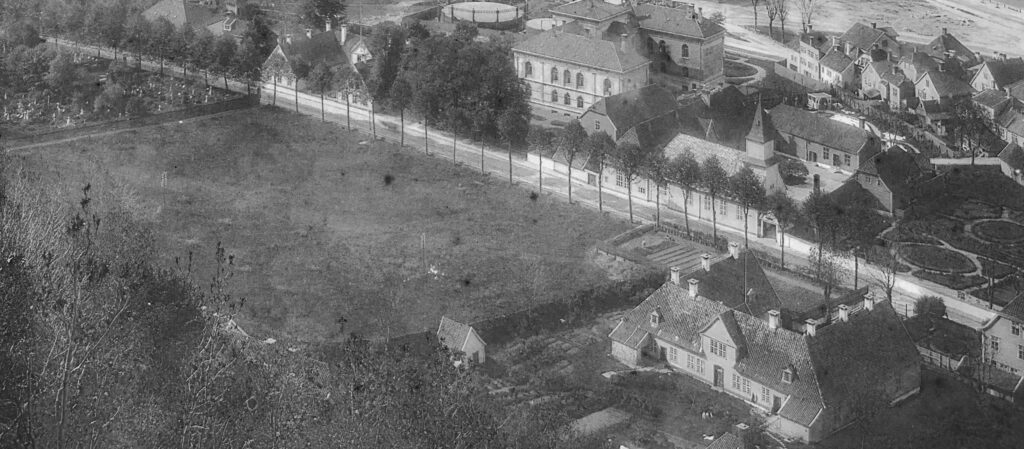
Photo: Knud Knudsen. Detail. The University of Bergen Library.
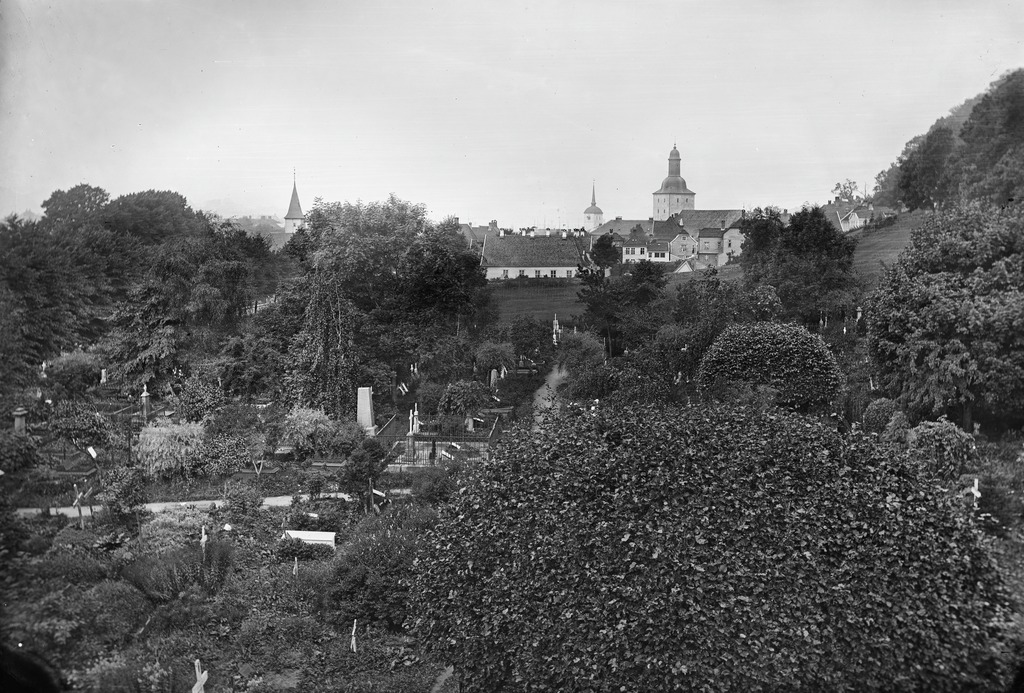
Photo: Knud Knudsen. The University of Bergen Library.
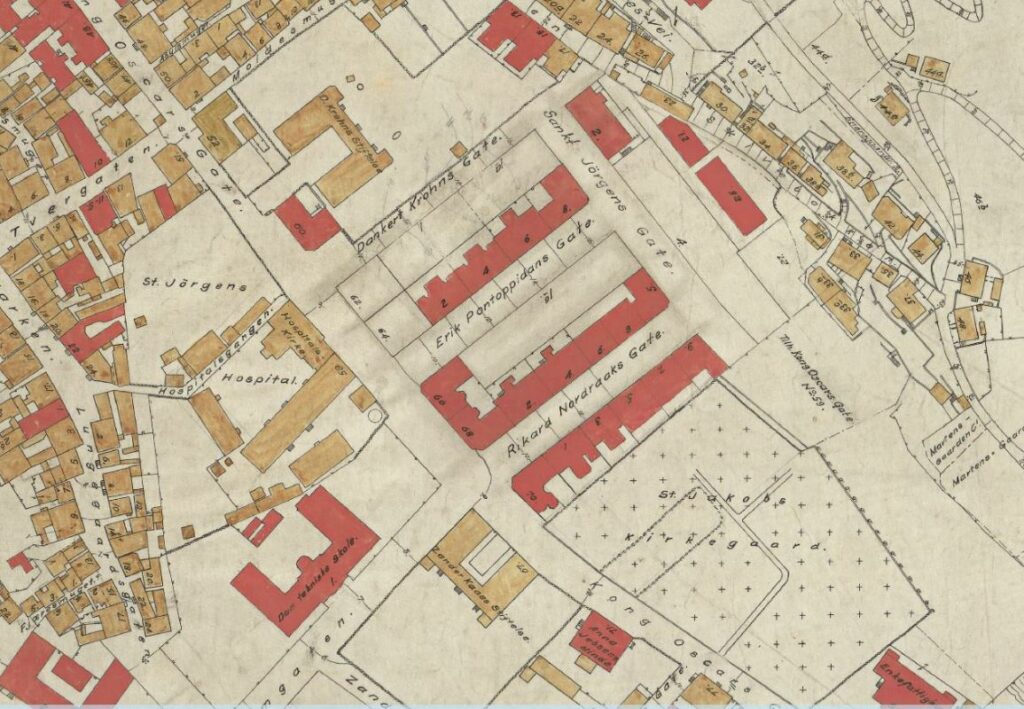
Historical map from urbgis.uib.no. The University of Bergen.
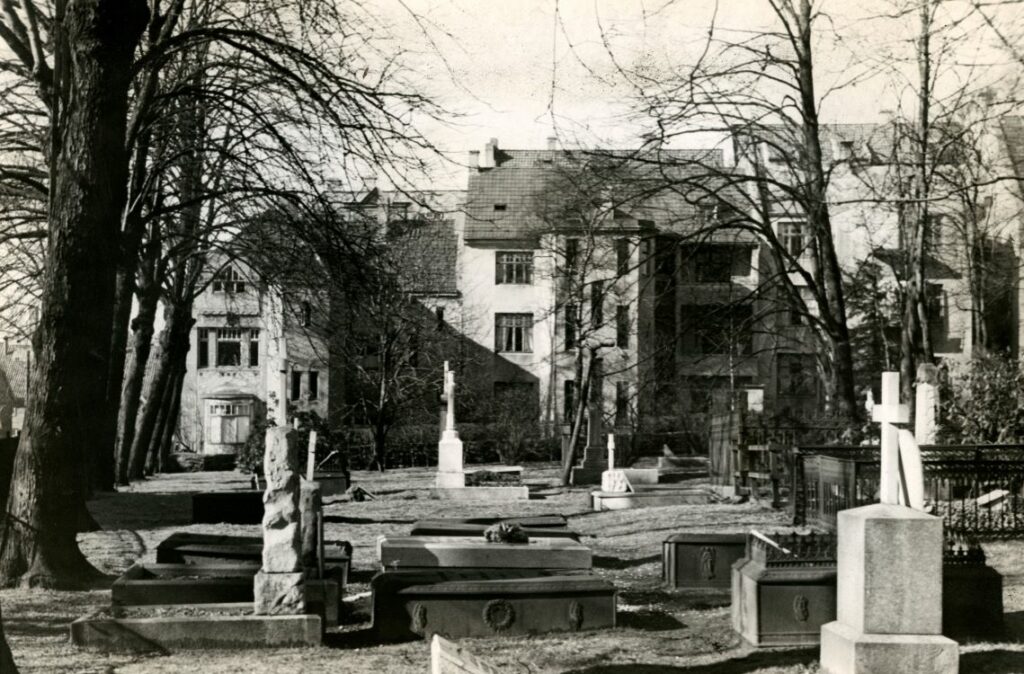
Photo: Bergen City Archives.
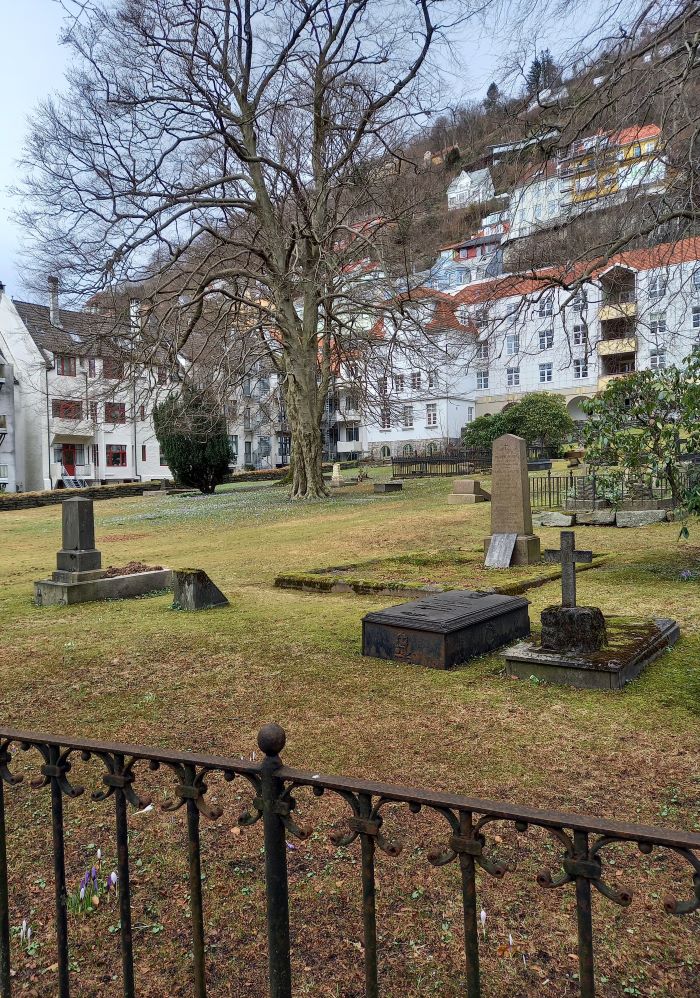
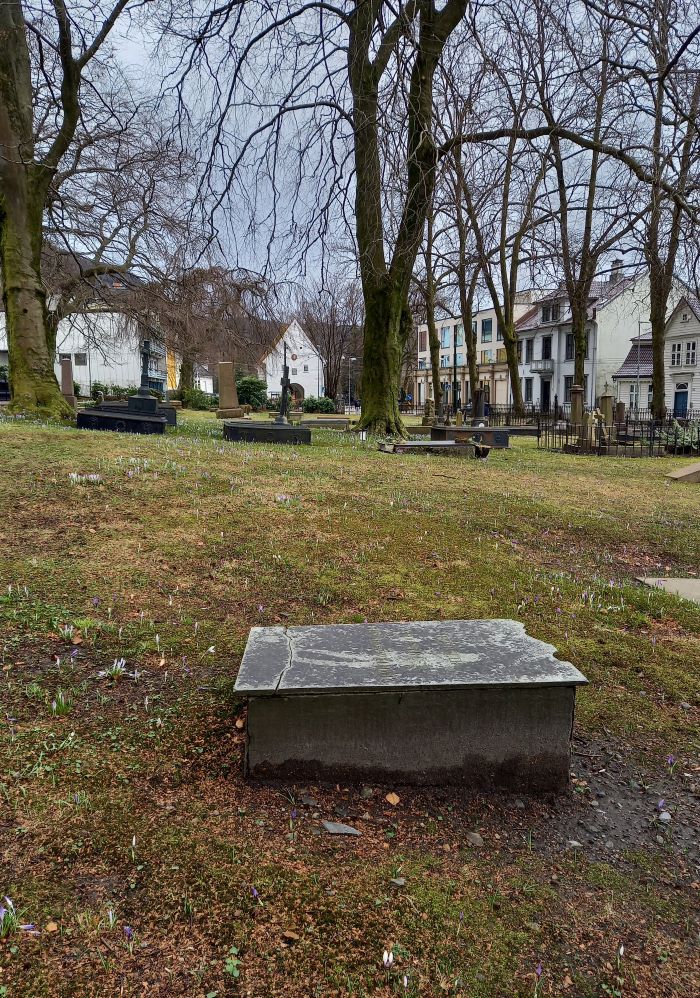
St. Jacob’s cemetery today. Hospital chaplain Johan Ernst Welhaven (1775–1828), who showed great kindness towards the residents of St. Jørgen’s during more than 20 years working at the hospital, is buried under a large slate slab in the shadow of one of the large trees in the cemetery.
Photos: Bergen City Museum.



